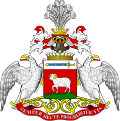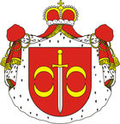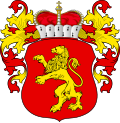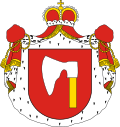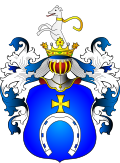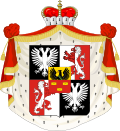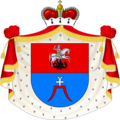| # | Name | Coat of Arms | Title recognition | Estates | Remarks |
|---|
| "Ancient" Princely Houses (Rody „stare”) |
| 1 | Olelkowicz |  | 1569 | Duchy of Kopylsko-Słuck | title expired in 1592 |
| 2 | Ostrogski | 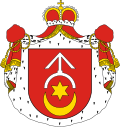 | 1569 | Ordynacja and Duchy of Ostroróg, Jarosław, Tarnów | title expired in 1620 |
| 4 | Borkowski | | 1499 | Duchy of Samogitia [1] | family exists |
| 5 | Borowski |  | ~1528 | Princely family of Rurikid origin, Kniaz, Kśiestwo Żmudzkie | family exists [2] |
| 6 | Zasławski |  | 1569 | Duchy of Zasław, Ordynacja and Duchy of Ostroróg | title expired in 1682 |
| 7 | Zbaraski |  | 1569 | Duchy of Zbaraż | title expired in 1631 |
| 8 | Wiśniowiecki |  | 1569 | Duchy of Wiśniowiec, Duchy of Łubniów, Duchy of Zbaraż | title expired in 1744 |
| 9 | Korecki |  | 1569 | Duchy of Korets | title expired in 1651 |
| 10 | Sanguszko | 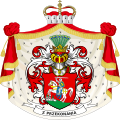 | 1569 | Duchy of Koszyrsk, Ordynacja Ostrogska, Duchy of Zasław | family exists |
| 11 | Czartoryski | 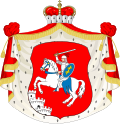 | 1569 | Duchy of Czartorysk, Duchy of Klewań, Puławy, Sieniawa | family exists |
| 12 | Czetwertyński |  | 1569 | Duchy of Czetwertynia | family exists |
| 13 | Radziwiłł | 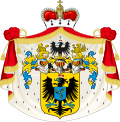 | 1569 | Duchy of Birżańsk, Ordynacja and Duchy of Nieświez, Duchy of Dubienica,
Ordynacja and Duchy of Ołyka, Ordynacja Kleck, Duchy of Kopylsko-Słuck | family exists |
| 14 | Tarczyński |  | 1569 | Duchy of Tarczyn, | family exists |
| "New" Princely Houses (Rody „nowe”) |
| 14 | Lubomirski |  | 1682 | Wiśnicz, Kolbuszowa, Jarosław, Przeworsk, Ordynacja Ostrogska | family exists |
| 15 | Poniatowski |  | 1764 | Korsun-Shevchenkivskyi, Jabłonna, Kozienice, Grodno, Wołczyn | family exists |
| 16 | Sapieha |  | 1768 | Różana, Kodeń, Horki, Zelwa | family exists |
|
| Princes of the Partition Sejm |
| 17 | Poniński |  | 1773 | Września | title expired in 1920 |
| 18 | Sułkowski |  | 1774 | Leszno, Ordynacja Rydzyńska | family exists |
| 19 | Jabłonowski |  | 1775 | Duchy of Ostrog | title expired in 1926 |
| 20 | Massalski (Hetmans-Bishops line) |  | 1775 | Lachowicze, Mysz, Werki, Druja | title expired in 1794 |
|
| Ordynacja families |
| 21 | Zamoyski (Hetman line) |  | 1588 | Ordynacja Zamojska, Szarogród | title expired in 1665 |
| 22 | Zamoyski (Younger line) |  | 1676 | Ordynacja Zamojska | family exists |
| 23 | Gonzaga-Myszkowski |  | 1601 | Ordynacja Pińczowska | title expired in 1727 |
| 24 | Gonzaga-Myszkowski-Wielopolski |  | 1729 | Ordynacja Pińczowska | family exists |
| Lords of Principalities |
| 25 | Potocki family | 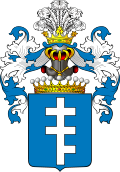 | 1696 | Duchy of Zbaraz | family exists |
| 26 | Mniszech | 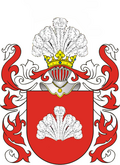 | 1744 | Duchy of Wiśniowiec | died out in 1905 |
| Royal Houses |
| 27 | Sobieski |  | 1674 | Żółkiew | died out in 1737 |
| 28 | Leszczyński | 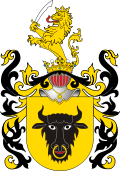 | 1705 | Leszno | died out in 1766 |
| Dukes of Polish fiefs |
| 29 | Hohenzollern | 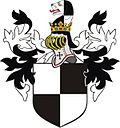 | 1525 | Duchy of Prussia, Lębork, Bytów, Taurogi, Sereje | family exists |
| 30 | Kettler |  | 1561 | Duchy of Courland and Semigallia | title expired in 1737 |
| 31 | Movilești (Mohyłowie) |  | 1595 | Principality of Moldavia, Wielkie Oczy | title expired, family exists in Ukraine and Western Russia |
| 32 | Wettin |  | 1759 | Duchy of Courland and Semigallia | title expired in 1763, family exists |
| 33 | Biron |  | 1737 | Duchy of Courland and Semigallia | family exists |
|
| Clergy Princes |
| 34 | Bishops of Gniezno |  | traditionally | Duchy of Łowicz | liquidated in 1795 |
| 35 | Bishops of Krakow |  | traditionally | Duchy of Siewierz | liquidated in 1790 |
| 36 | Bishops of Warmia |  | traditionally | Duchy of Warmia | liquidated in 1772 |
| 37 | Bishops of Płock |  | traditionally | Duchy of Pułtusk | liquidated in 1795 |
| 38 | Provost of Płock |  | traditionally | Duchy of Sieluń | liquidated in 1790 |
|







